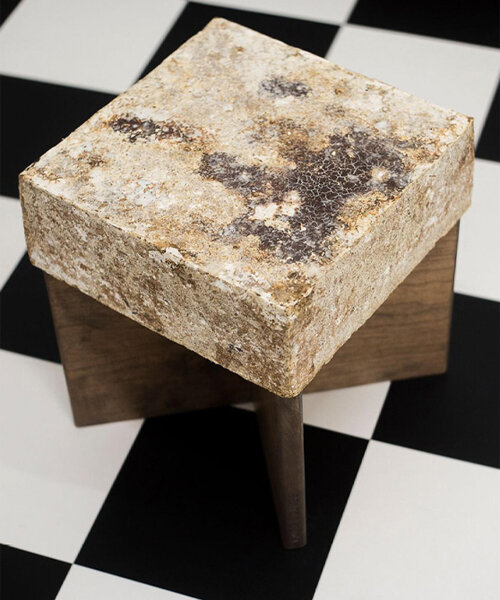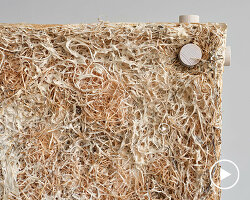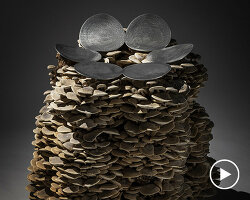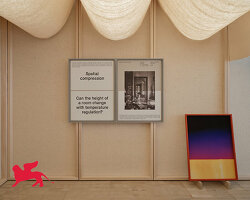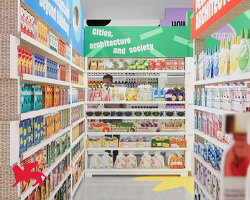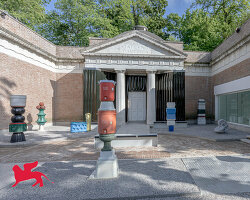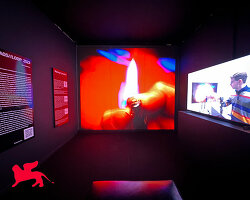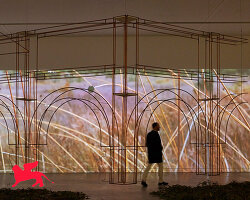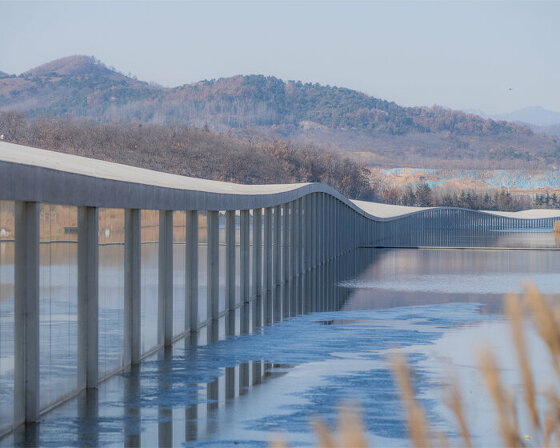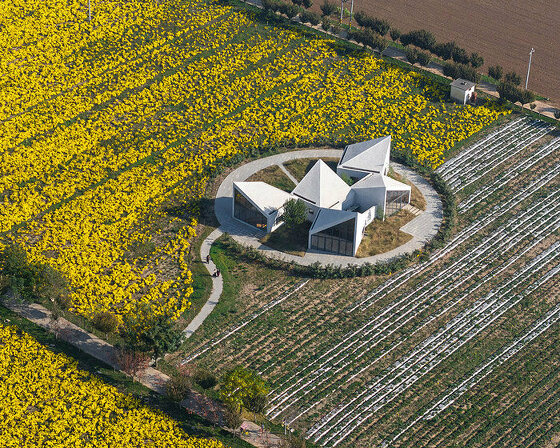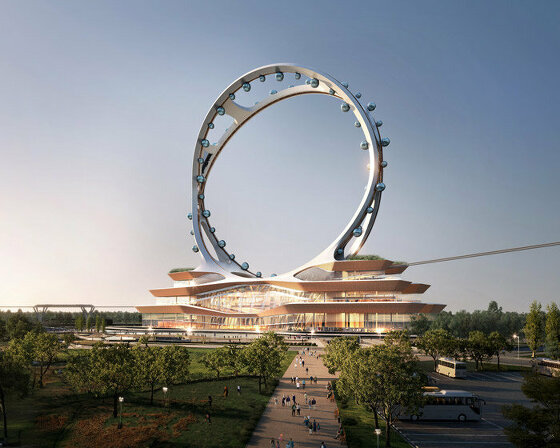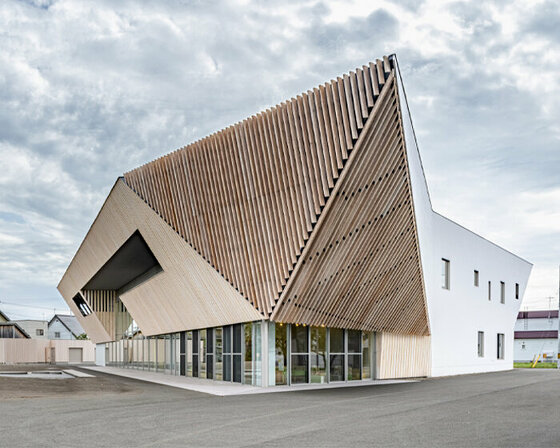the potential of mycelium as a biomaterial in architecture
From Hermès’ mushroom-based leather bag and Adidas’ Stan Smith Mylo, to sustainable deity sculptures and living coffins, designboom has been spotlighting the fascinating boom of mycelium-based innovations across different industries, namely fashion, product design and architecture.
A mushroom mycelium is defined as a network of fungal threads (hyphae) that can spread underground to create an impressive root-like structure serving as the vegetative part of a fungus. This living network keeps the soil healthy, interacts symbiotically with most plant species, and serves as a food source for many organisms, including insects.
Over the last few years, designers, technologists, artists, and architects have gradually harnessed its bio-enhancing qualities to create sustainable alternatives to traditional and rigid materials with strong carbon footprints. Following extensive research, experimentation, and prototyping, the potential of mycelium as a biomaterial began growing exponentially, especially in the building industry: its renewable, biodegradable, lightweight, and highly insulating properties offer a promising step toward an architectural vision that is at one with nature. Read on as we explore the incredible building applications of mycelium that made headlines at this year’s Venice Architecture Biennale, Clerkenwell Design Week, and Glastonbury Festival.

image courtesy Critical Concrete | read more on designboom here
SYMBIOCENE LIVING BY PLP LABS: prototyping mycelium blocks
London-based research group PLP Labs, founded by PLP Architecture (see more here), launched Symbiocene Living, an installation for Clerkenwell Design Week 2023 made from mycelium modular blocks, demonstrating a possible future in which civilization and nature entertain a positive symbiotic relationship. The exhibit comprises bio-based sculptures crafted from hybrid blocks of mycelium and 3D printed wood structures. Eighty-four blocks, resembling watermelons in size, are arranged to form abstract seating, planters, a table, partitions, and fascinating spatial formations. Visitors are encouraged to interact and explore these mycelium structures, gaining firsthand experience of the symbiotic relationship between humans and fungi.
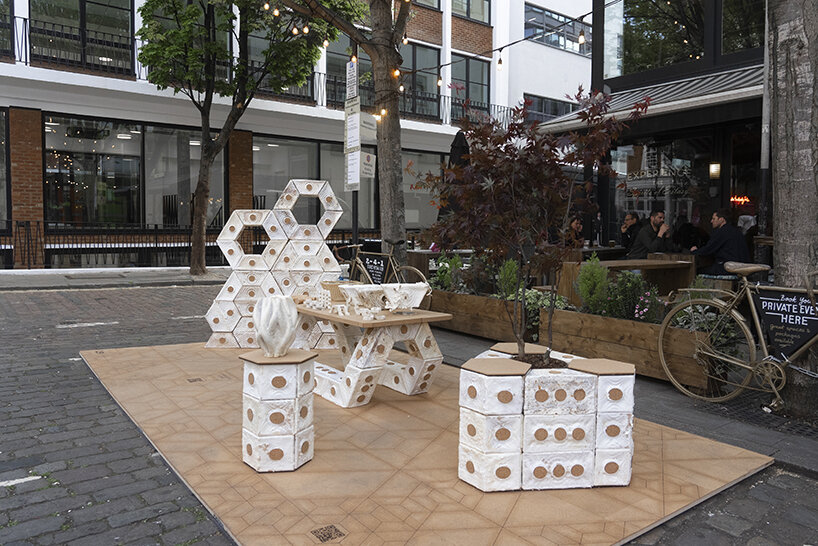
image © PLP Architecture
‘Mycelium, the intricate root-like network of fungi, holds immense potential in the development of the Symbiocene, a future era where humans and nature actively collaborate to create a better world. Recognizing the pivotal role of architects and urban designers in shaping this transformative period, PLP Labs has conducted an extensive year-long experiment to explore the structural capabilities and architectural potential of mycelium bio-composites,’ writes the research studio.
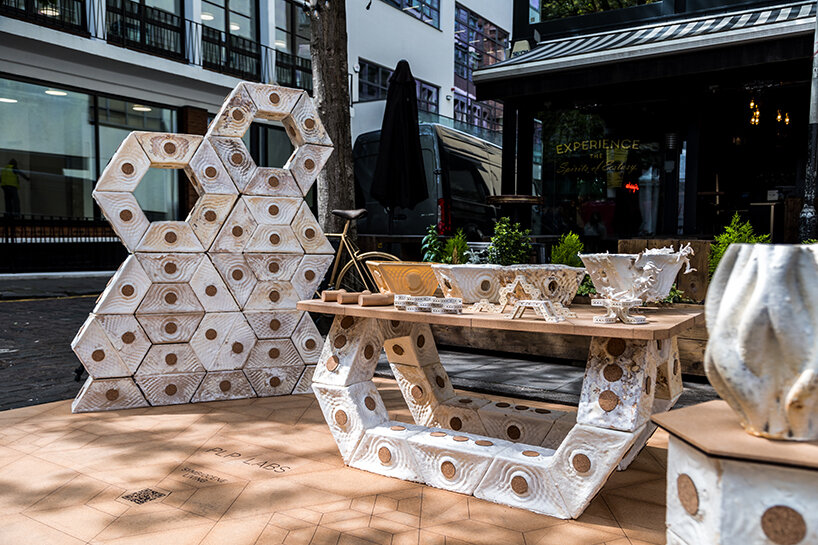
image © George Fielding Photography | @georgearchiphoto
The study revealed mycelium to be a versatile material suitable for various applications in architecture. Unlike conventional materials like concrete and steel, mycelium bio-composites are renewable, biodegradable, and have minimal environmental impact. Additionally, they boast lightweight properties, excellent insulation characteristics, and high fire resistance. PLP Labs successfully combined engineering ingenuity with the natural attributes of fungi, employing the fusion of mycelium and 3D-printed wood shells to create a myriad of precisely molded configurations. The Symbiocene Living installation was displayed at Clerkenwell Design Week 2023 from the 23rd to the 25th of May. Visitors were encouraged to stop by and talk to the PLP Labs team of experts. Those interested can engage with further events throughout the year.
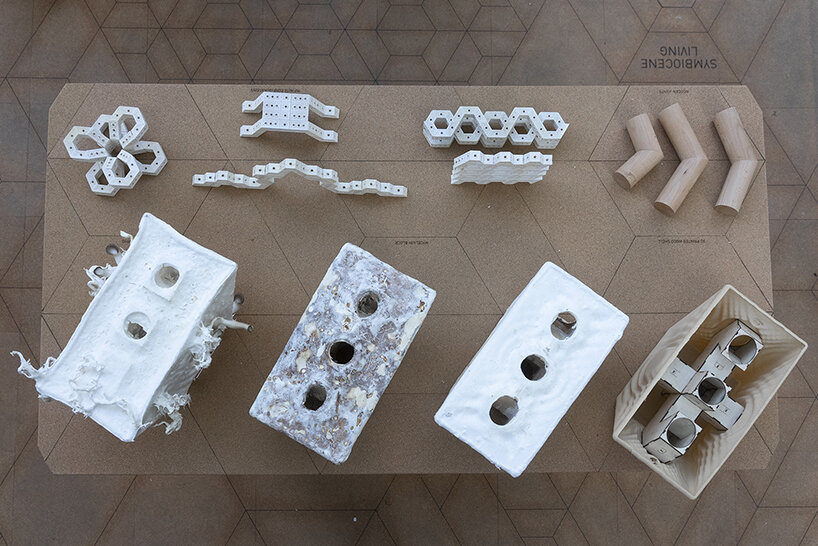
image © PLP Architecture
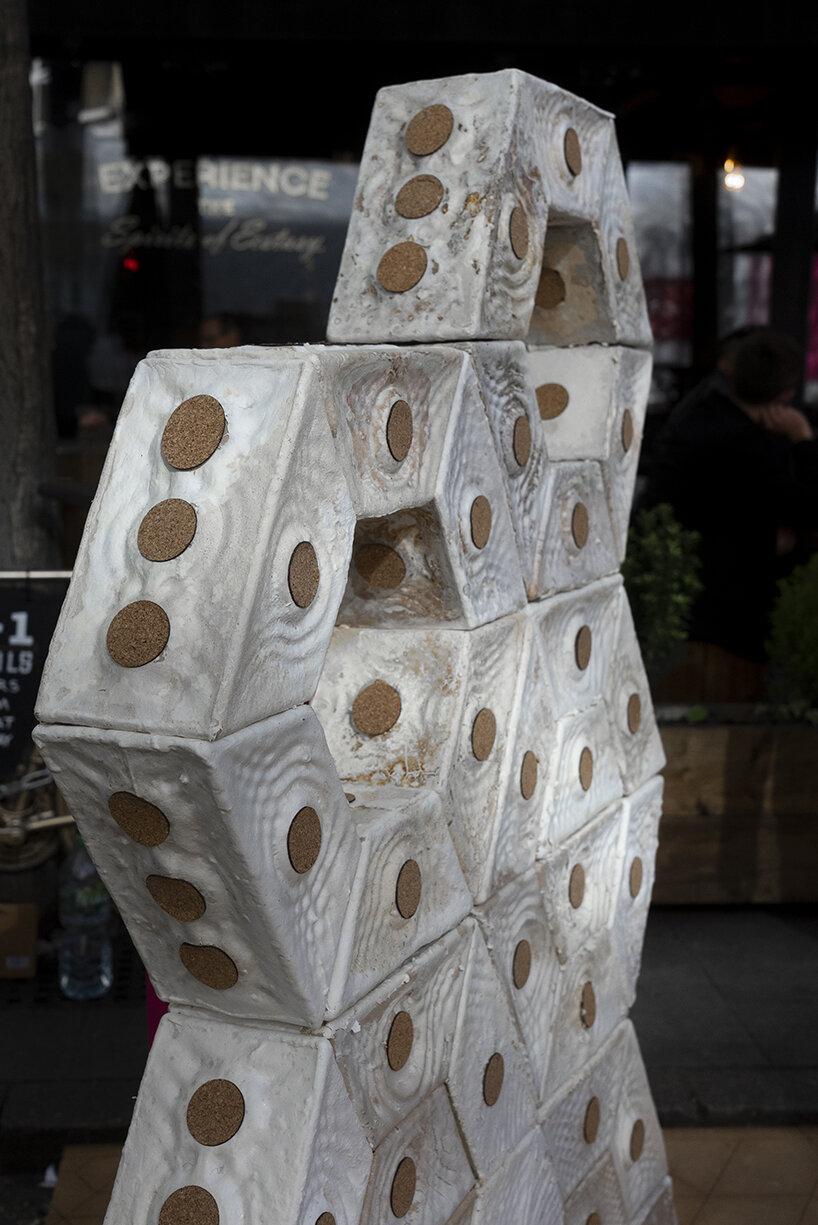
image © PLP Architecture
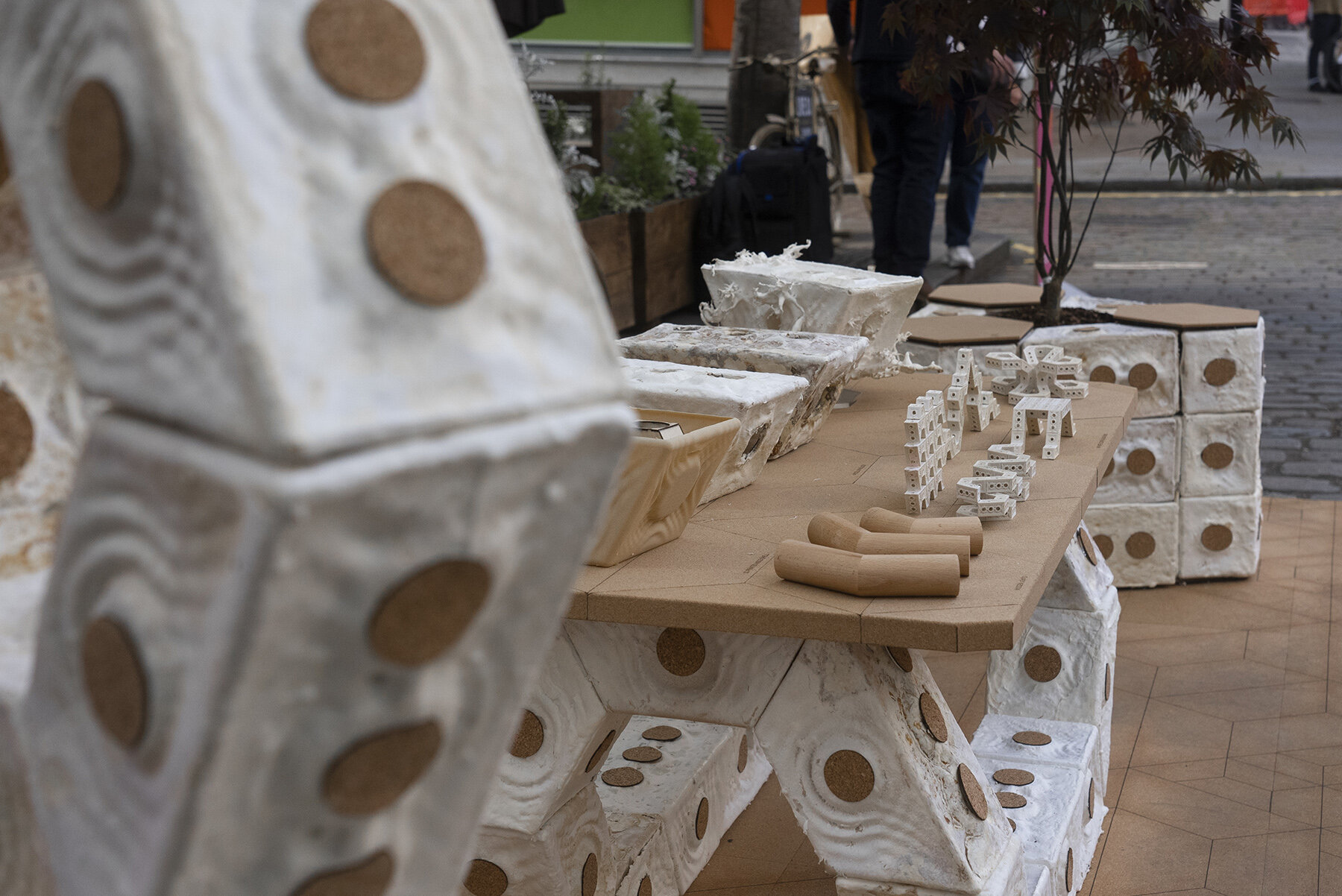
image © PLP Architecture
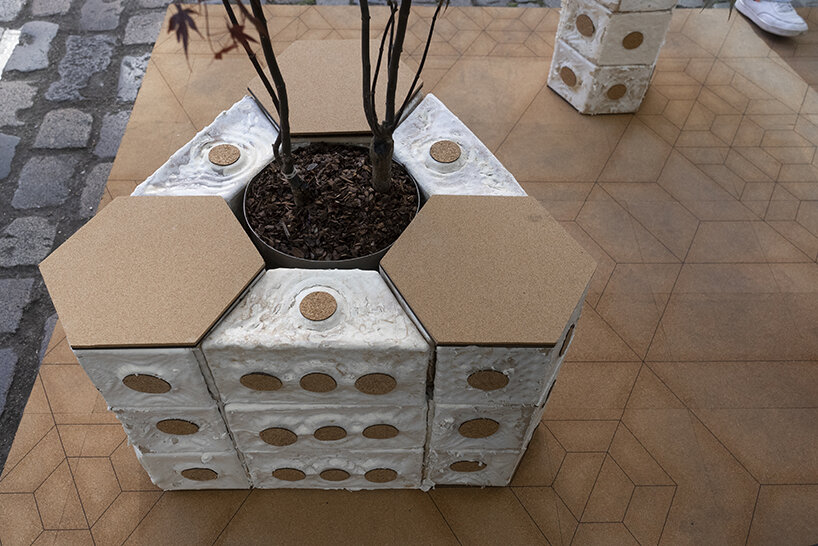
image © PLP Architecture
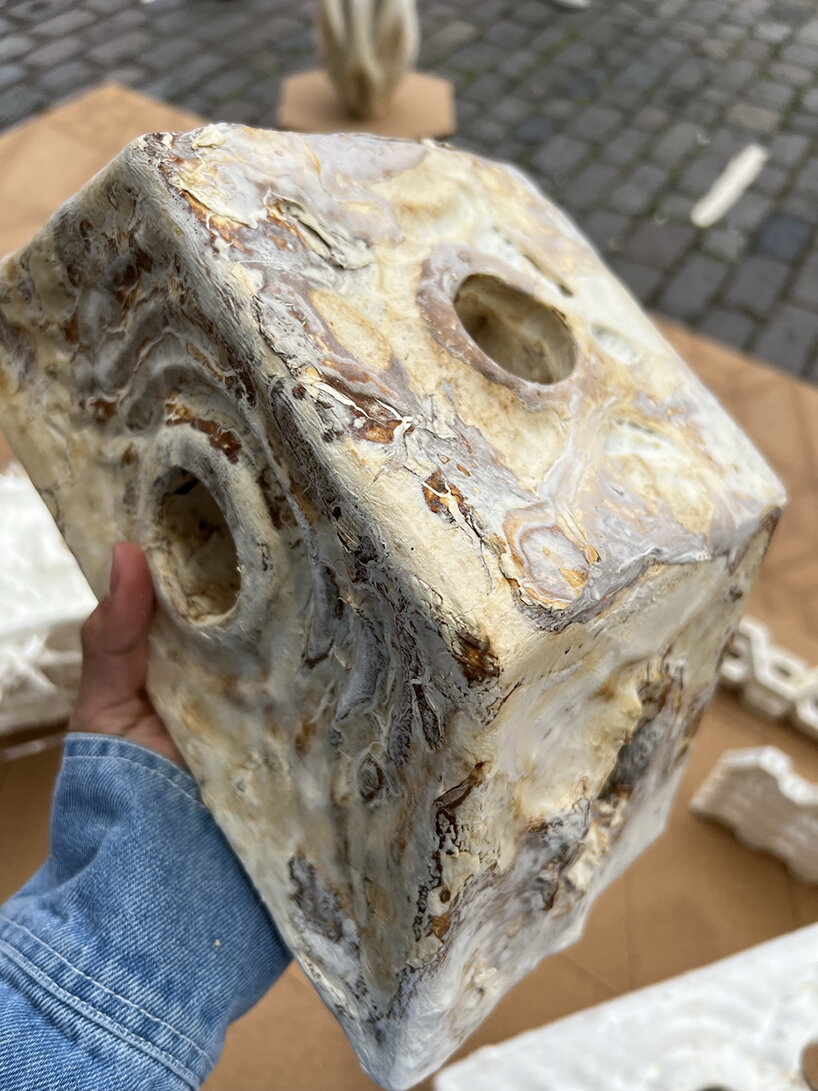
image © PLP Architecture
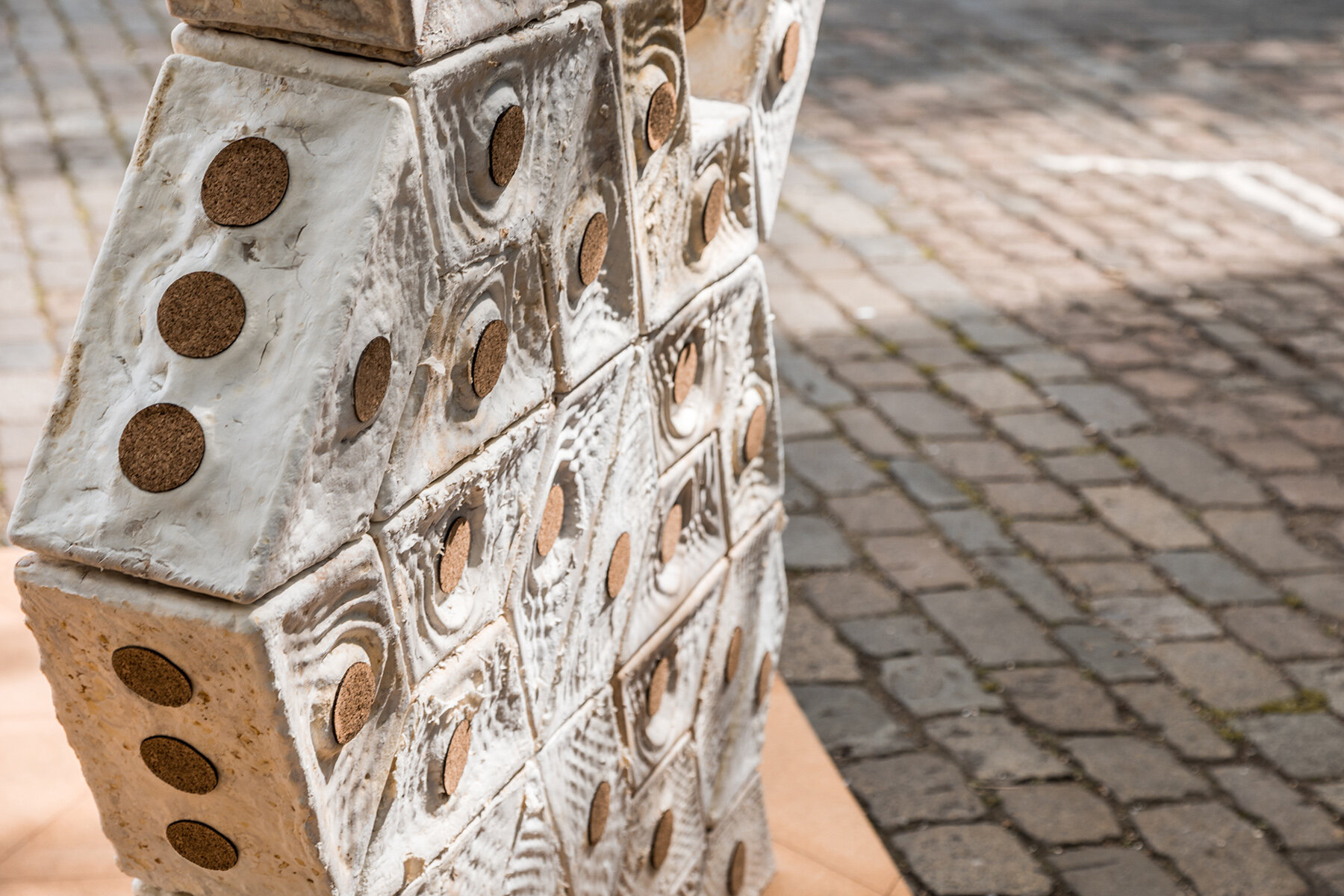
image © PLP Architecture
venice architecture biennale: in vivo at the belgian pavilion
At this year’s Venice Architecture Biennale, the Belgian collective Bento collaborated with philosopher Vinciane Despret to curate the 2023 installation of the Belgium Pavilion. Titled In Vivo, the project questions our system of extractivist production by identifying and developing construction alternatives using materials derived from living organisms, and the imagery that accompanies them. Ultimately, the curators have turned the Pavilion into a place where visitors can experience alternative resources from the world of building and architecture, in a sensitive way and where the development process of some of them can be played out.
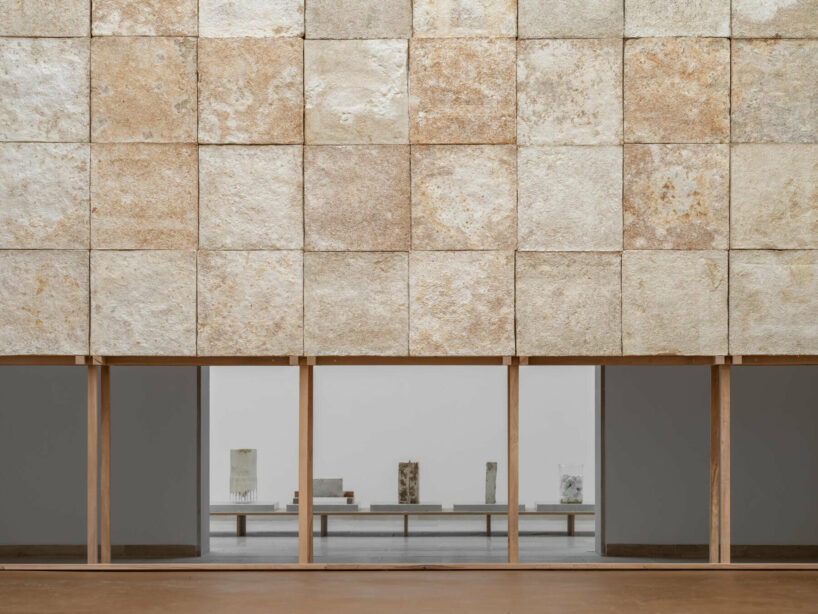
In Vivo: Experimenting with mycelium and raw earth | image © Ugo Carmeni
In the central room, natural living materials take center stage as an installation of mycelium panels in a spectacular wooden structure (12m long x 6m wide x 6m high) resting on a floor of raw earth from excavated soil. ‘This provides an opportunity for visitors to experience the sensory, tactile, acoustic, and poetic characteristics of these materials. Mycelium, wood, and earth all stem from the urban area of Brussels with a view to an ultra-local, sustainable supply,‘ comment the curators. The structure was specifically designed to be dismantled, its elements given a second life in Venice by the local company Re-Biennale, which has been appointed to assemble and disassemble the structure.
‘With the adjoining rooms dedicated to the experimentation and fabrication of the installation created by Bento, In Vivo is akin to one of the ‘laboratories of the future’ that the curator Lesley Lokko has called for in this 18th edition. It is an open door to another way of creating architecture, based on local resources, which is conducive to the emergence and development of new channels for living materials in Belgium and beyond.’
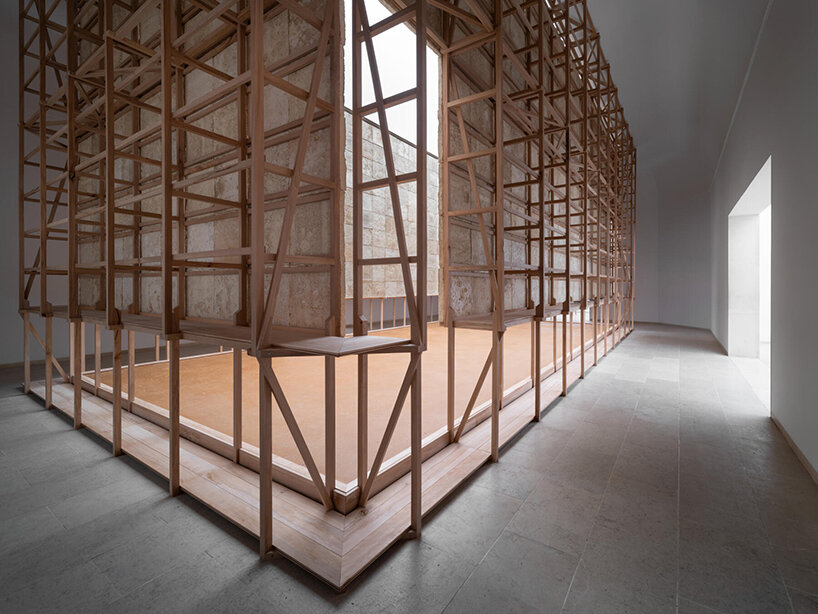
image © Ugo Carmeni
In addition to the installation, a catalog titled ‘Living in Mycelium’ explores our future condition in light of the advent of the ‘mycelocene’ era characterized by the recognition of sponges and their relationship with humans. It takes as its starting point Bento’s proposal made in 2023 by looking at the possibilities it opens up. Based on clues and fragments collected by Belgian writer Christine Aventin and Vinciane Despret, this investigation brings together a variety of archives, including correspondence, extracts from mycological and philosophical texts, an anthropologist’s field notebooks, and reports by psychologists, historians, and experts in therolinguistics (the discipline that studies non-human languages and literature). ‘The text evokes the entanglement of mycelium networks that are at the heart of the research on materials exhibited at the Belgian Pavilion at the 18th International Architecture Exhibition in the form of a heterogeneous, non-linear whole that brings together current scientific research and fictional proposals,’ explains the team.

image © Marie Aynaud | @maynaud

image © Ugo Carmeni
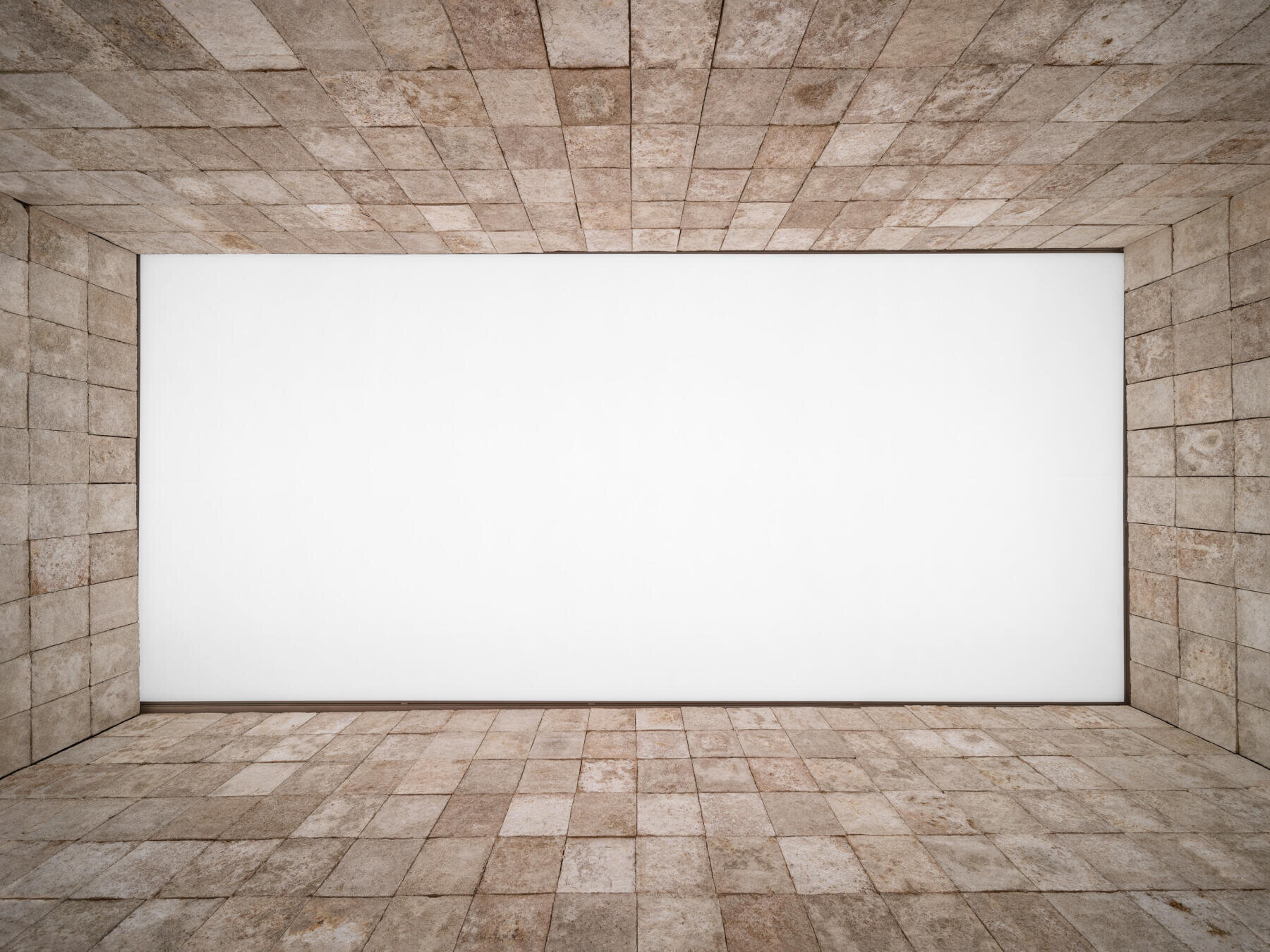
image © Ugo Carmeni
silver hayes pavilion at the 2023 glastonbury festival
Moving to the 2023 Glastonbury Festival, the Silver Hayes dance/music area celebrated its 10th anniversary by introducing a new pavilion and artistic project dubbed 6°. The structure harnesses the interconnected power of mycelium and investigates the potential adoption of this biomaterial in the creative industries — from film, TV, set design, and educational institutes such as Central St Martins, the Royal College of Art, and Bath Spa University. Silver Hayes’ TeamLove led the project and invited Simon Carroll from Temple Design Studio to design the architecture with Big Team CIC, Glastonbury Festival, and manufacturers, Biohm and GROWN bio.
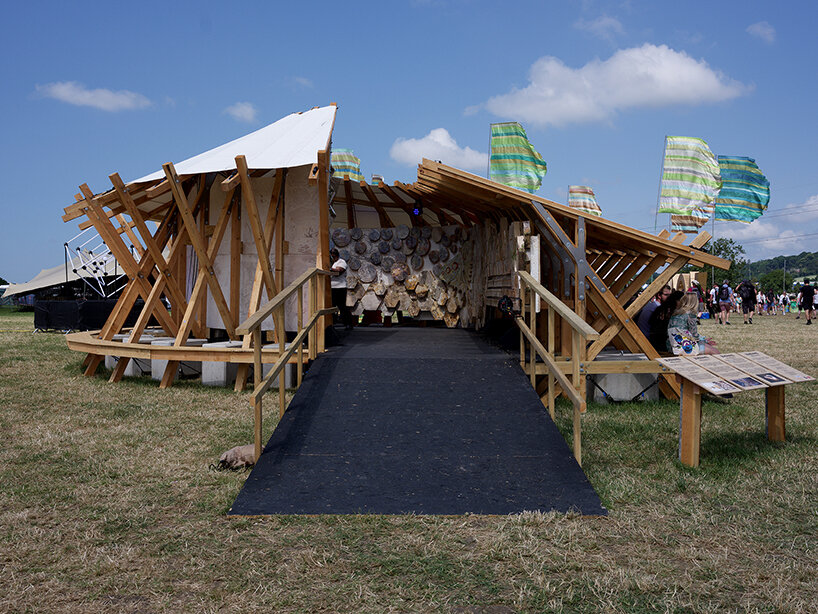
Glastonbury Festival’s new Hayes Pavilion marks the 10th anniversary evolution for its Silver Hayes field, its debut art project was titled ‘6 °’ and was on show at the festival | image © Chris Hoare | @chrishoarephoto
Ultimatelty, the Haye Pavilion at the festival aims to demonstrate the opportunity to move away from environmentally impacting materials to a more sustainable fungi future. When mycelium is fed with agricultural waste, it forms a construction material, like those you can buy, such as polystyrene, foam, and plastics, but made entirely organic and compostable. Over six weeks in the lead-up to the installation at Glastonbury, this creative collective will test, manipulate and challenge what is possible with mycelium as a practical material.
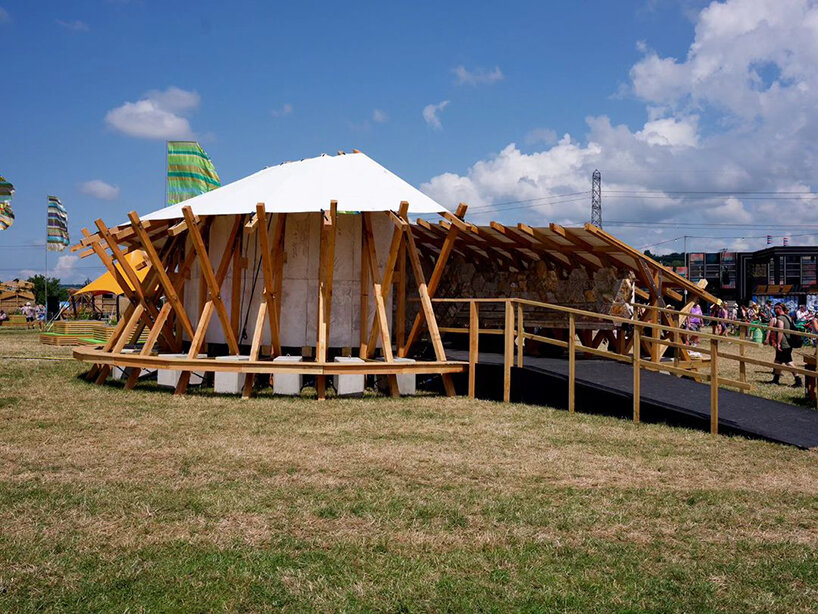
image © Chris Hoare
‘We are entering a crucial time in how we meet creative design challenges in an informed sustainable approach and to provide the creative industry with an innovative tool kit of materials is such a privilege. I hope the work we have done within the project will go on to inspire others to make positive disruptive choices,’ writes Simon Carroll from Temple Design Studio. On-site at the Glastonbury Festival, the 6° pavilion will then showcase these findings in an exhibition that journeys from simple two-dimensional forms to more innovative three-dimensional approaches, which will push the creative limits of the mycelium material in architecture. The magical mycelium Pavilion will also host specially commissioned immersive sound art compositions by academic and musician Brian d’Souza (Auntie Flo) and rising star Or: la in collaboration with harpist Roísín Berkeley. The music will highlight the ties between people and places that emulate the connectivity of mushrooms.
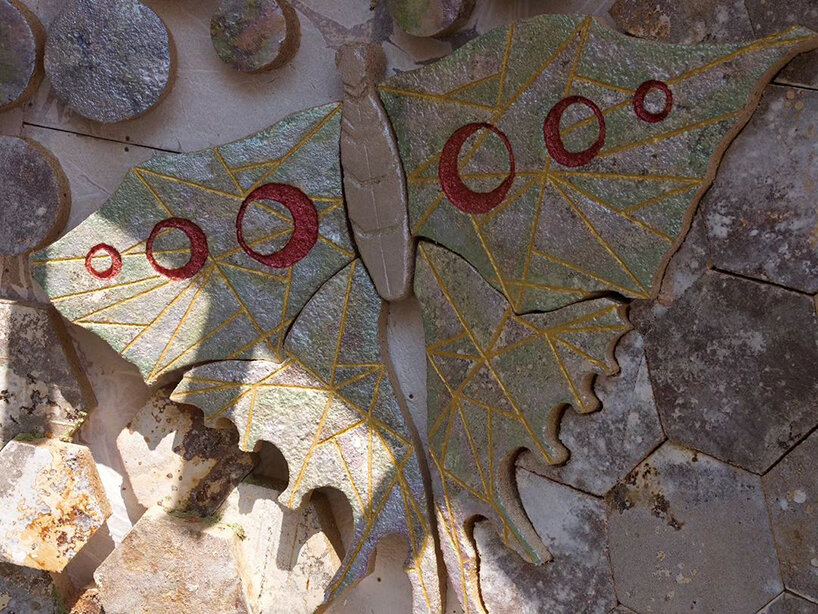
image © Chris Hoare
The creative learnings from the mycelium project, as well as carbon data collection, will be published in a report after Glastonbury; the aim is to give the wider industry the findings and recommendations on best practices for future creatives wanting to interact with the biomaterial. Alongside the report, a short film will be published documenting the journey. This video team will include training placements through Big Team CIC. The Hayes Pavilion will be a returning platform for artistic research and development at Glastonbury each year, looking at how festivals can be at the forefront of new ideas, materials and products which will potentially help society move towards a more sustainable future.
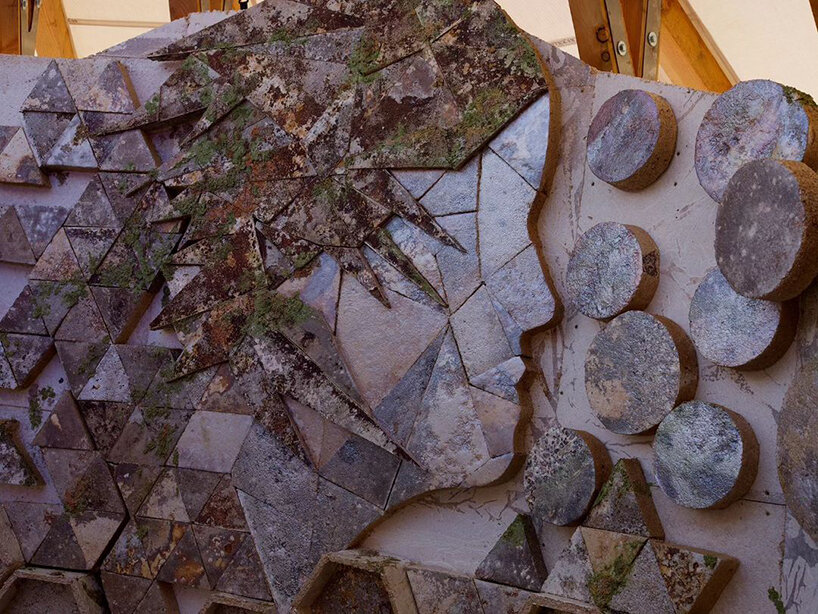
image © Chris Hoare
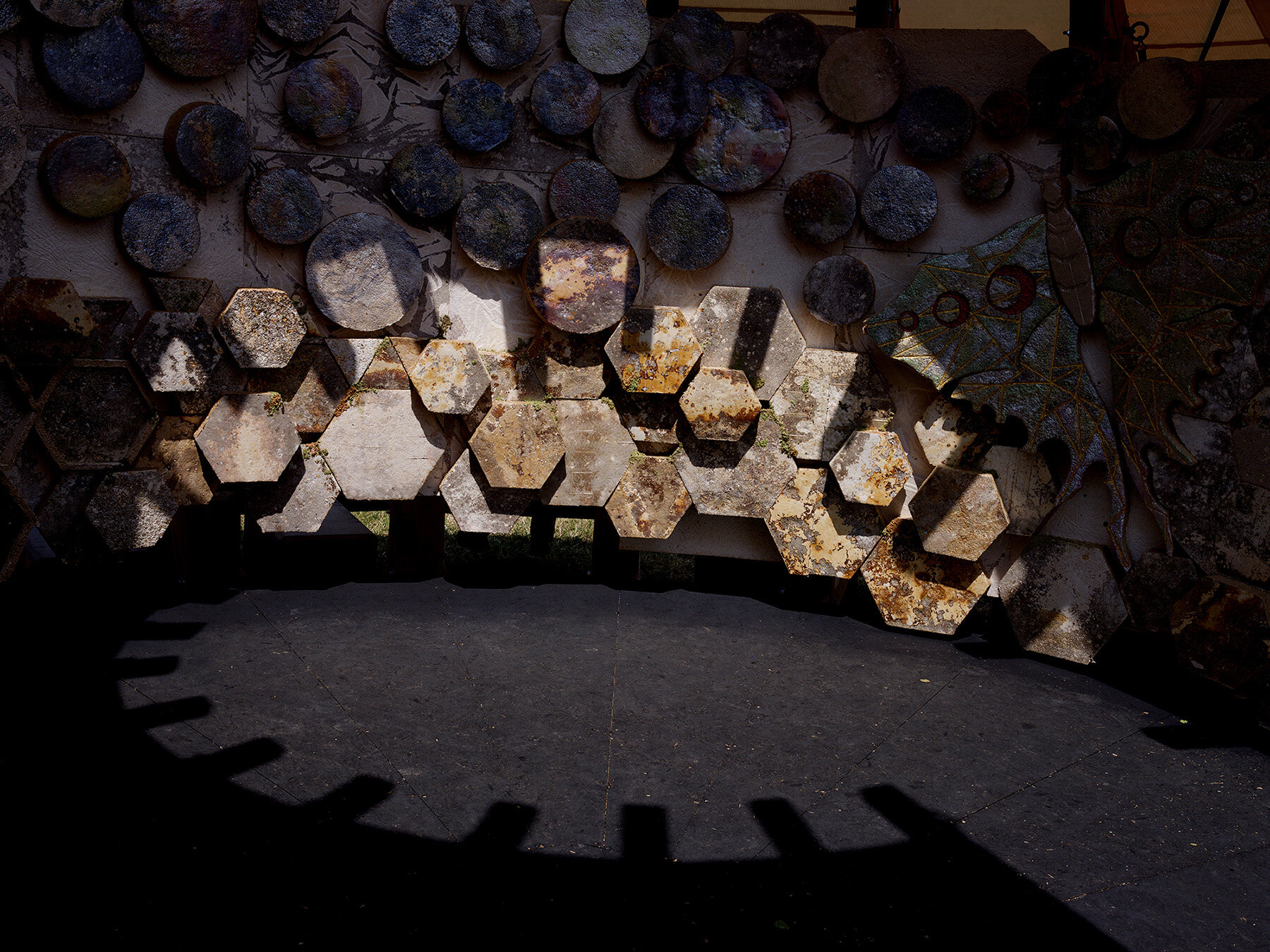
image © Chris Hoare
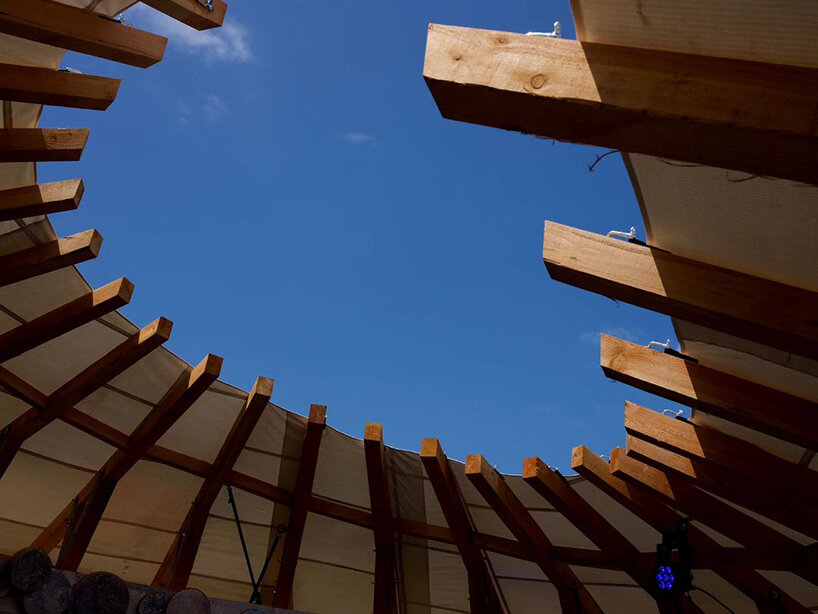
image © Chris Hoare
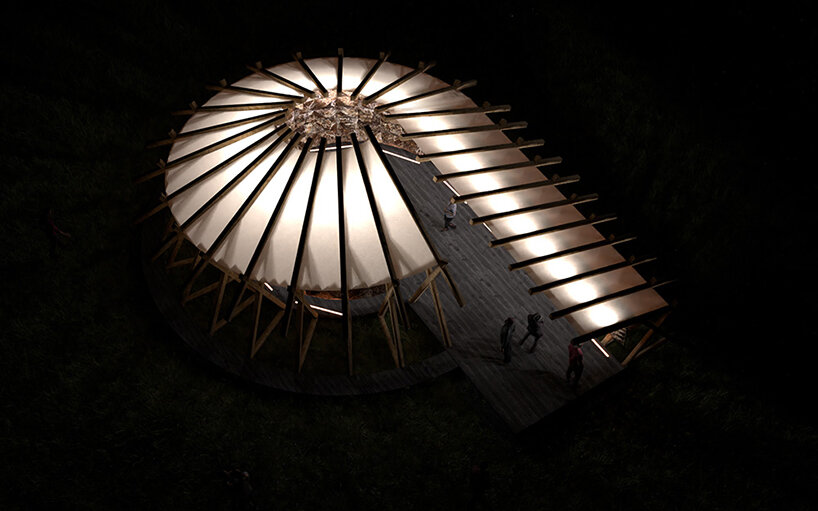
top view rendering © Andrew Cunningham
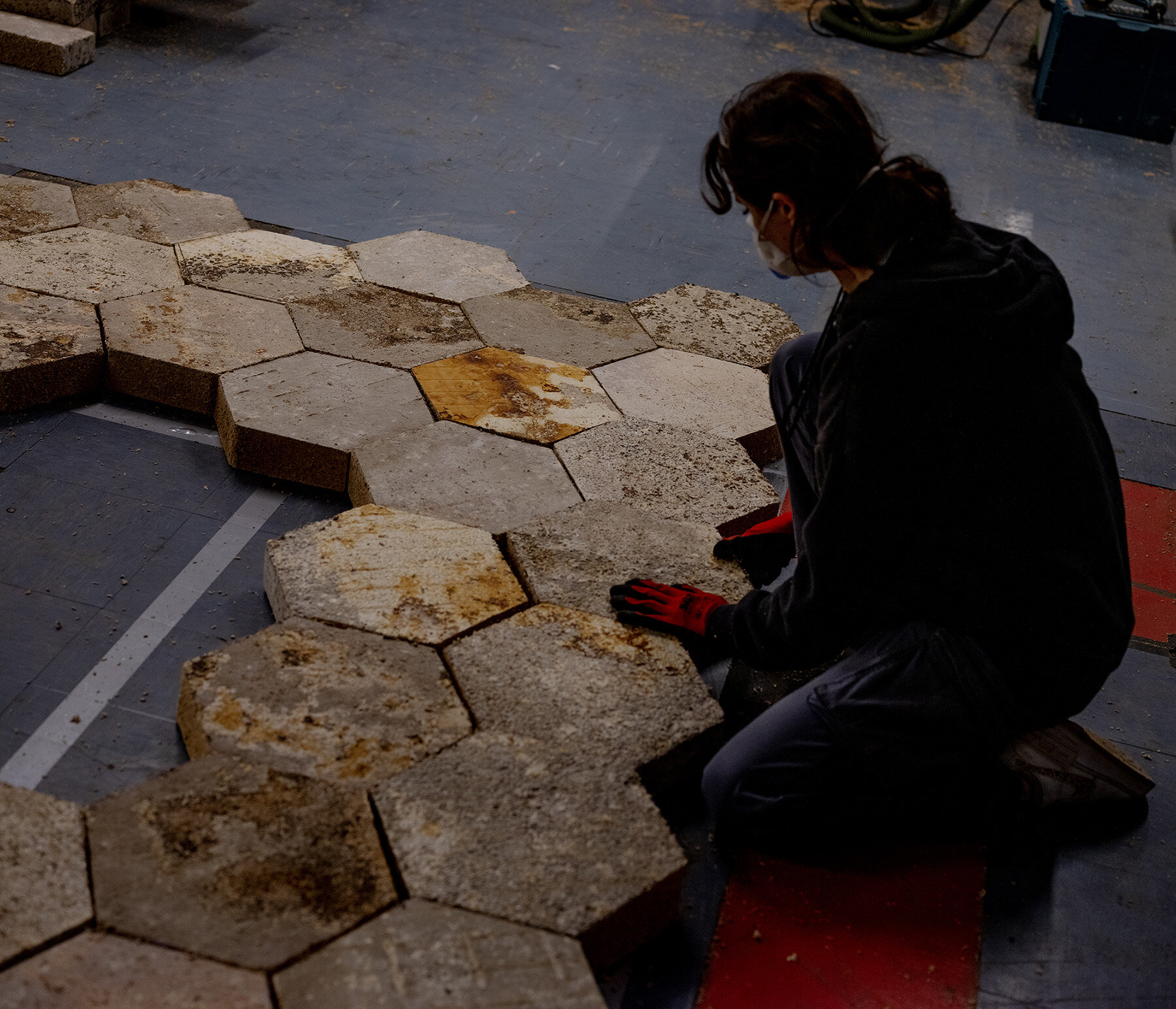
image © Chris Hoare
projects info:
— first —
name: Symbiocene Living
location: London, UK
architecture: PLP Labs | @plplabs
program: Clerkenwell Design Week 2023 | @clerkenwelldesignweek
dates: 23-25 May, 2023
— second —
name: In Vivo
location: Belgian Pavilion, Giardini della Biennale
program: 18th International Architecture Exhibition – La Biennale di Venezia | @labiennale
curators: Bento Architecture | @bento.architecture, Vinciane Despret
–third —
name: Hayes Pavilion 6°
location: Silver Hayes field, Pilton, Somerset, England
program: Glastonbury Festival 2023 | @glastofest
architecture & build: Simon Carroll – Temple Design Studio
project lead: Benjamin Price
sustainability lead: Pauline Bourdon
production & delivery: TeamLove
biotechnology: BIOHM, GROWN bio
biomaterials specialist: Leksi Kostur
constructed at: DOCUMENT Bristol
scenic sculpture consultant: Hannah Morris-Code
renderings: Andrew Cunningham
film producer & director: Phoebe Holman
film DOP: Siddiqui Media
audio capture: Manoel Bolutife Akure
MUSHROOM MYCELIUM (26)
VENICE ARCHITECTURE BIENNALE 2023 (40)
PRODUCT LIBRARY
a diverse digital database that acts as a valuable guide in gaining insight and information about a product directly from the manufacturer, and serves as a rich reference point in developing a project or scheme.
